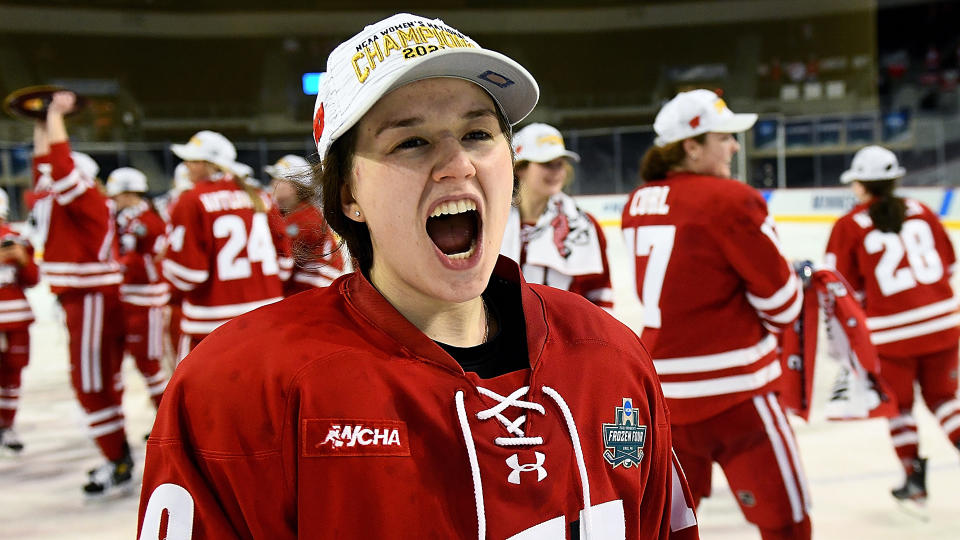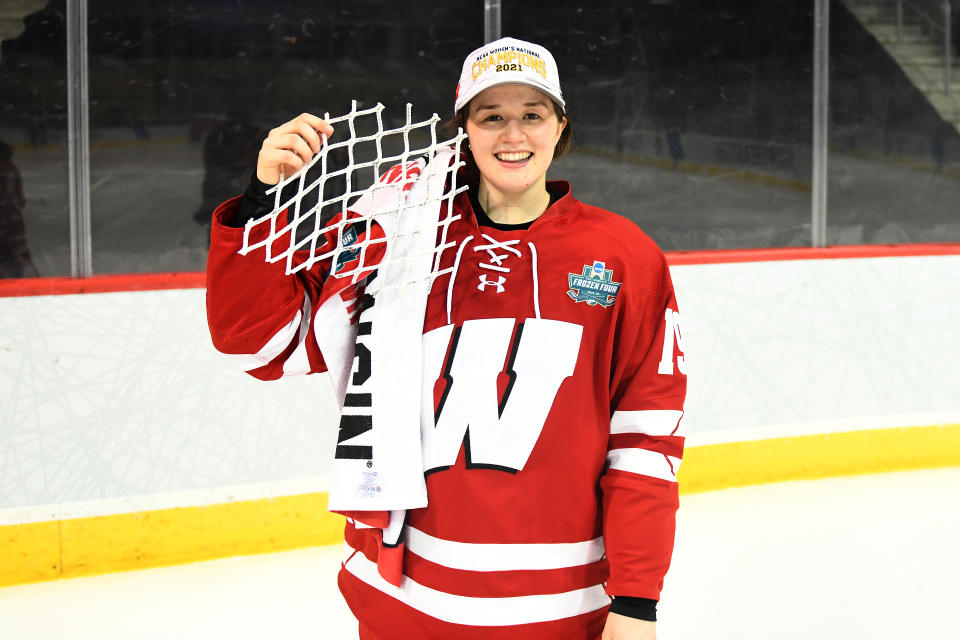
Despite finishing her NCAA hockey career as the second highest scoring player in NCAA women’s hockey history, Daryl Watts faced a difficult decision. Options to play professional hockey were limited, especially if she wanted to earn a living wage.
She’d been accepted to a Master’s program in commercial real estate with the prospects of making six-figure sums soon. Alternatively, her lifelong dream of playing hockey was over. At age 23, she considered herself retired from the game as the PWHPA and PHF just weren’t paying sustainable wages.
That was, until the PHF announced its salary cap would be increasing to $1.5 million next season. With that news, Watts’ head started spinning. She told her parents she wouldn’t be going back to school this year, and soon, she signed with the PHF’s Toronto Six.
As it turns out, the six-figure sums Watts had hoped for were already hers, as she signed a two-year deal that will pay her $150,000 next season. The contract is the biggest in women’s hockey history, smashing Mikyla Grant-Mentis’ contract of $80,000 she signed this season with the Buffalo Beauts.
For Watts, however, it wasn’t about smashing records, it was about smashing the glass ceiling and opening doors for future generations of women in professional hockey.
“Women’s hockey has been struggling for so long. I think a number like this will provide the women’s hockey community great relief and a great sense of hope that the future is bright,” said Watts of her record contract.
“This represents a great step forward for women’s hockey. When I was young, I think I would have been excited to know that pro women’s hockey players can make a significant amount of money now. It’s a good day for women’s sports and women’s hockey.”


From a retired 23-year-old hockey player eyeing a career in real estate to a rookie in North America’s only professional women’s hockey league, Watts’ perspective quickly shifted.
“When I had considered myself retired, I was so excited for what my future looked like without hockey, because hockey had been my life for so long,” she said. “It was fun to have a new perspective, but my perspective changed.
“The opportunity to make a good living playing the sport I first fell in love with — what a dream come true.”
It’s an experience women’s athletes are having across North America with professional leagues paying six-figure salaries, including the WNBA (basketball) and NWSL (soccer).
The WNBA salary cap will be $1,420,500 for 2023. It’s a number lower than the PHF, although with fewer roster spots, WNBA players will make, on average, more than players in the PHF. The NWSL salary cap was recently increased as well, upping their per team limit to $1,375,000.
With increased salary comes increased attention for the league, and more players who will choose the PHF rather than playing with the PWHPA, heading to Europe, or retiring.
In fact, of the last five Patty Kazmaier Award winners, representing the top women’s hockey player in the NCAA, three are currently in the PHF, while a fourth — last year’s winner Taylor Heise — is still in the NCAA. Watts won the award herself in 2017-18. Similarly, last year’s Canadian university player of the year, Jade Downie-Landry, is also in the PHF playing for the expansion Montreal Force.
Watts believes it’s a clear sign “that the young skilled players are starting to move toward the PHF,” which she called the “future of women’s hockey because the next generation is now here.”
Last season with Wisconsin, Watts scored 57 points and 28 goals in only 38 games. While the Toronto product could focus on adding to her personal accolades, for now, her intent is to be an ambassador for the game, so young girls can see possibility in the PHF and professional women’s hockey.
“I hope to help grow women’s hockey and establish a professional league that young girls can look up to and where salary compensation is enough to make a living for yourself, and that’s why I believe in the PHF,” said Watts.
After twice representing Canada at the U-18 World Championship, collecting a pair of silver medals, Watts is unsure where the future will lead her, but she’s not ruling out anything, including competing for a roster spot with Team Canada again. Until then, she’s excited to be back playing the game she loves, and making a living doing it.
More from Yahoo Sports
